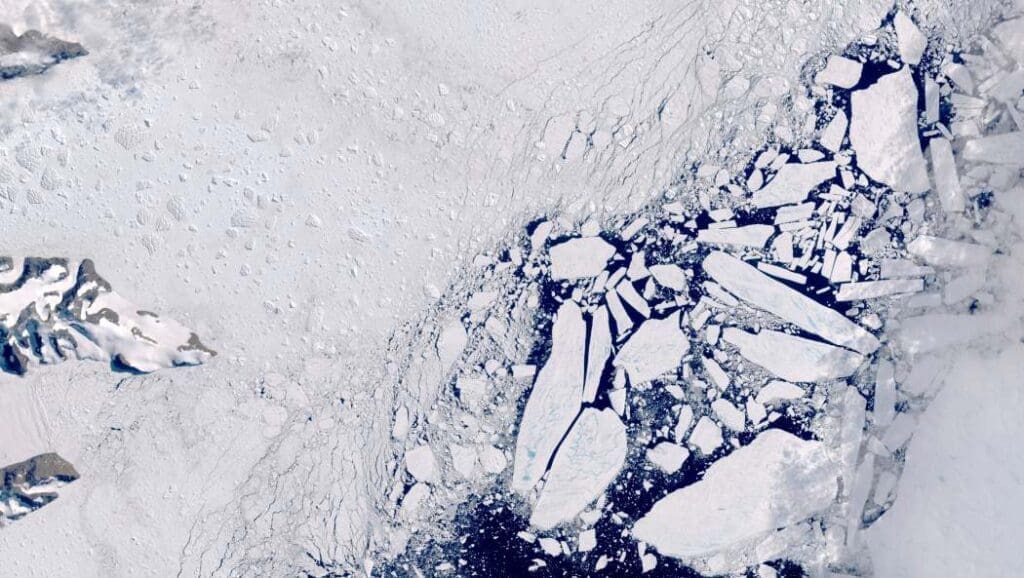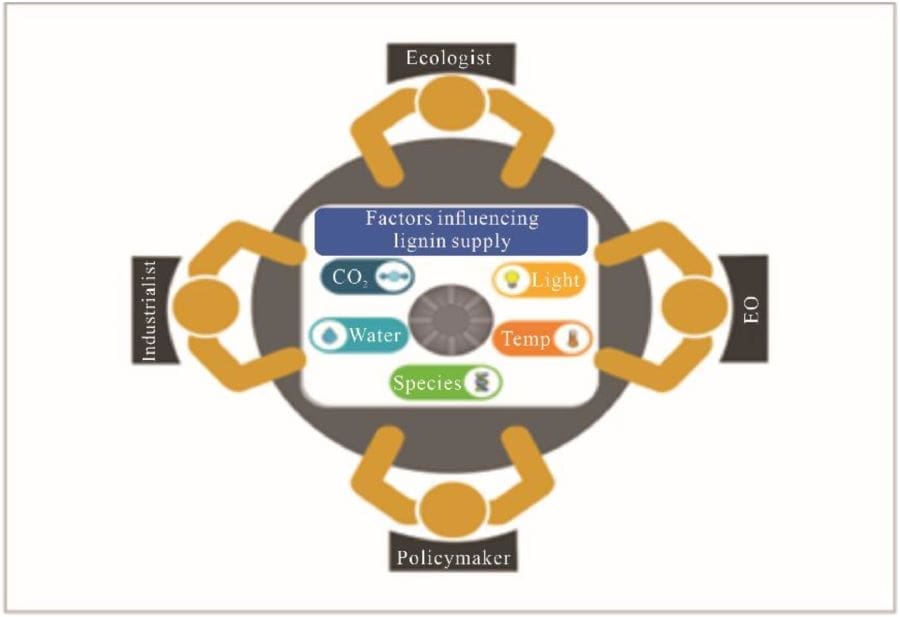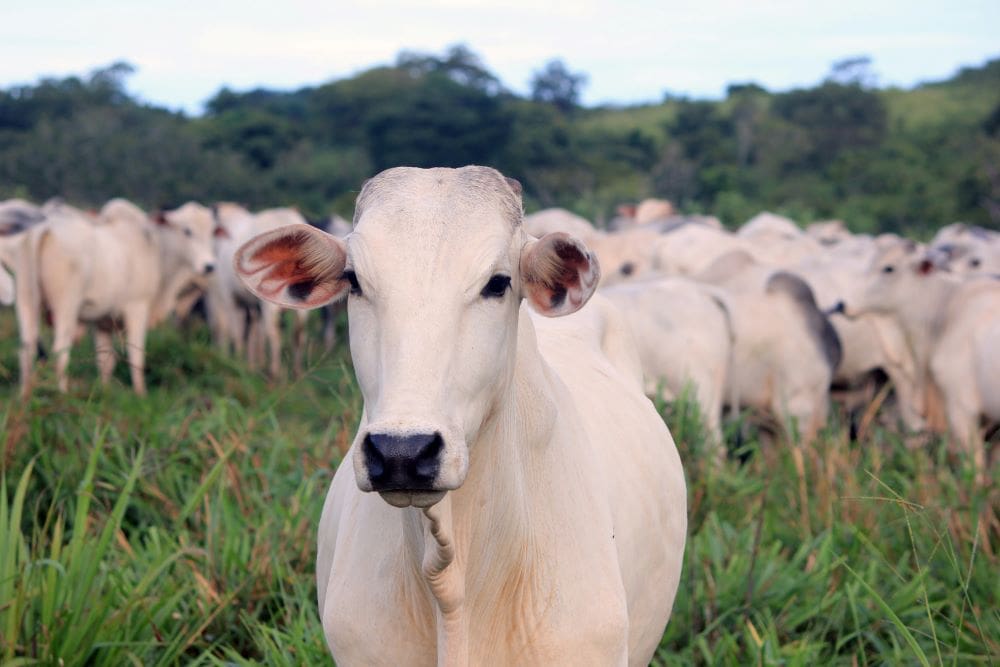Explore the latest insights from top science journals in the Muser Press daily roundup, featuring impactful research on climate change challenges.
Table of Contents
Antarctic ice sheet faces ‘death by a thousand cuts’
A recent study conducted by University of Florida geologists and geographers has shed new light on the effects of climate change on Antarctic ice shelves. It found that while there has been broad ice shelf loss due to warming temperatures, the frequency and size of major iceberg calving events has not changed significantly.
This study, published in Geophysical Research Letters, was led by Assistant Professor of Geological Sciences Emma MacKie, Ph.D., and Assistant Professor of Geography Katy Serafin, Ph.D., along with a collaborator at the Colorado School of Mines.
“Our results suggest that the primary threat to our ice shelves is ‘death by a thousand cuts’ via small calving events, rather than catastrophic extremes,” said MacKie.
Calving, when chunks of ice break off from ice shelves to form icebergs, is common and increasingly influenced by climate change. For extremely large icebergs, this process is typically slow, often starting with small rifts that spread across the ice shelf before fully breaking off.

These rifts can be detected as they form and grow using satellite data, but their random nature and the risks associated with sending scientists to observe them in-person make it extremely difficult to predict when future rifts or calving events may occur. Major calving events are particularly challenging to study. While smaller calving events occur frequently, large events — where over 100 square kilometers of ice break away — are exceptionally rare.
This study is the first of its kind to focus on these large calving events. Even with 47 years’ worth of satellite data from 1976 to 2023, the team was still faced with a small sample size. This challenge was addressed with extreme value theory, a type of statistical analysis used when studying rare natural disasters like major earthquakes, extreme floods, or volcanic eruptions.
As an expert on extreme flooding, Serafin was no stranger to this type of data analysis.
“Statistical models relating event size and frequency are tools that have been used for estimating rare flood events, like a 100-year flood, for decades,” said Serafin. “Now that satellite imagery can more consistently track large calving events, we thought we’d test whether we could apply the same tools for understanding how likely these massive calving events are.”
Using this method, the team analyzed extreme calving events found in the satellite record and developed a model to predict the likelihood of these events over time. While creating their models, researchers also developed scenarios to predict how large calving events could be.
By their estimates, a once in a decade iceberg could be as large as 6,100 square kilometers, only slightly larger than an extreme calving event in 2017, when an iceberg roughly the size of Delaware broke off the Antarctic ice sheet. A once in a century event could produce an iceberg about 45,000 square kilometers, slightly larger than the entire country of Denmark.
“A once in a century iceberg would be several times larger than any in the observational record and would have a significant impact on ice-sheet stability and ocean processes,” said MacKie.
The team found no evidence that large icebergs have increased in size over the last half century, with the peak iceberg surface areas occurring between 1986 and 2000. This indicates that extreme calving events do not correlate with climate change, although overall ice shelf loss has increased due to climate change.
While extreme calving events continue to be rare and may be part of a larger natural cycle, more numerous small calving events have dominated Antarctic ice shelf loss over the last half century.
Journal Reference:
MacKie, E. J., Millstein, J., & Serafin, K. A.. ’47 Years of large Antarctic calving events: Insights from extreme value theory’, Geophysical Research Letters 51, e2024GL112235 (2024). DOI: 10.1029/2024GL112235
Article Source:
Press Release/Material by University of Florida
Climate change and the future of lignin production
This mini-review explores the influence of temperature on lignin deposition in plant cell walls, highlighting the need for adaptive strategies in lignin supply chains amidst global warming.
Lignin, a complex polymer found in plant cell walls, is the second most abundant organic substance in the plant kingdom after cellulose. It plays a crucial role in providing structural support and defense mechanisms in plants.
Industrially, lignin is a by-product of the pulp and paper industry and is increasingly being explored for its potential in biofuels, bioplastics, and advanced materials. However, as global temperatures rise, the production and availability of lignin could be significantly impacted.

The study, published in Journal of Bioresources and Bioproducts, reviews existing evidence suggesting that lignin deposition is constrained by low temperatures and enhanced by higher temperatures. This has significant implications for industries that rely on lignin, as climate change could alter the availability and characteristics of this resource.
The authors highlight that lignin biosynthesis is a critical evolutionary adaptation that allowed plants to thrive on land. Lignin not only provides mechanical strength but also protects plants from environmental stresses such as drought and herbivory. However, the impact of climate change on lignin production is multifaceted.
While low temperatures inhibit lignification, high temperatures appear to promote it, although the latter effect requires further investigation.
The review emphasizes the need for adaptive strategies to ensure a resilient lignin supply chain. This includes understanding regional variations in lignin content, exploring alternative lignin sources, and developing climate-resilient plant varieties. Sustainable forestry and agricultural practices are also crucial in mitigating the impacts of global warming on lignin production.
The study concludes that adapting lignin supply to global warming requires a multifaceted approach involving scientific research, technological innovation, and supportive policy frameworks. By addressing these aspects comprehensively, industries can navigate the complexities of climate change and ensure a sustainable supply of lignin for various applications.
Journal Reference:
Giulia Resente, Alan Crivellaro, ‘Environmental Impacts on Plant Cell Wall Lignification’, Journal of Bioresources and Bioproducts 10, 1 (2025). DOI: 10.1016/j.jobab.2024.11.001
Article Source:
Press Release/Material by Journal of Bioresources and Bioproducts
Ocean-surface warming four times faster now than late-1980s
The rate of ocean warming has more than quadrupled over the past four decades, a new study has shown.
Ocean temperatures were rising at about 0.06 degrees Celsius per decade in the late 1980s, but are now increasing at 0.27 degrees Celsius per decade.
Published in Environmental Research Letters, the study helps explain why 2023 and early 2024 saw unprecedented ocean temperatures.
Professor Chris Merchant, lead author at the University of Reading, said: “If the oceans were a bathtub of water, then in the 1980s, the hot tap was running slowly, warming up the water by just a fraction of a degree each decade. But now the hot tap is running much faster, and the warming has picked up speed. The way to slow down that warming is to start closing off the hot tap, by cutting global carbon emissions and moving towards net-zero.”

Energy imbalance
This accelerating ocean warming is driven by the Earth’s growing energy imbalance – whereby more energy from the Sun is being absorbed in the Earth system than is escaping back to space. This imbalance has roughly doubled since 2010, in part due to increasing greenhouse gas concentrations, and because the Earth is now reflecting less sunlight to space than before.
Global ocean temperatures hit record highs for 450 days straight in 2023 and early 2024. Some of this warmth came from El Niño, a natural warming event in the Pacific. When scientists compared it to a similar El Niño in 2015-16, they found that the rest of the record warmth is explained by the sea surface warming up faster in the past 10 years than in earlier decades. 44% of the record warmth was attributable to the oceans absorbing heat at an accelerating rate.
Expect more warming
The findings show that the overall rate of global ocean warming observed over recent decades is not an accurate guide to what happens next: it is plausible that the ocean temperature increase seen over the past 40 years will be exceeded in just the next 20 years. Because the surface oceans set the pace for global warming, this matters for the climate as a whole. This accelerating warming underscores the urgency of reducing fossil fuel burning to prevent even more rapid temperature increases in the future and to begin to stabilise the climate.
Journal Reference:
Christopher J. Merchant, Richard P. Allan and Owen Embury, ‘Quantifying the acceleration of multidecadal global sea surface warming driven by Earth’s energy imbalance’, Environmental Research Letters 20, 024037 (2025). DOI: 10.1088/1748-9326/adaa8a
Article Source:
Press Release/Material by University of Reading
Featured image credit: Gerd Altmann | Pixabay




